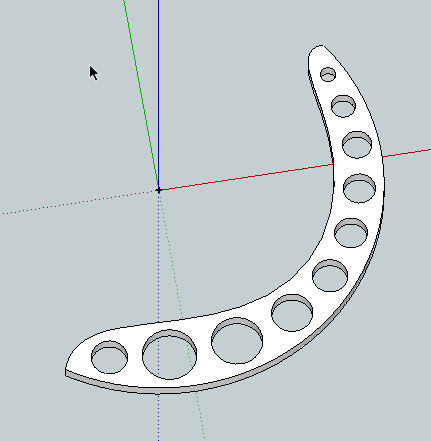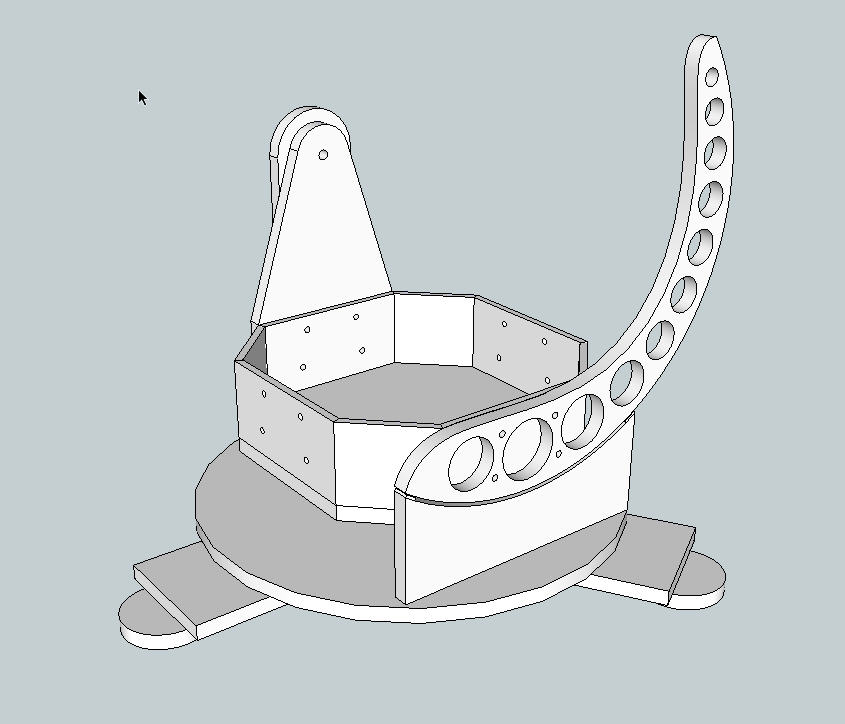Irregular Crescent shape with lightening holes
-
I have an irregular crescent shaped object used as a rocker trunnion bearing. It is 3/4 inch thick. The outer convex curve is a circular arc of 12" radius and 157 degrees (those are the critical measurements), and the inside concave curve is a nice bezier curve. One horn is tapered more acutely than the other. The greatest thickness of the horn is around 3", but is not too critical.
The part is made of machined 3/4" sheet aluminum and is intended as a bearing, similar in shape to what you would find on a simple rocking chair. I've attached an attempt.
I want to make this part light, so I am putting lightening holes in it that are evenly spaced and centered between the inside and outside curves. They are thus functional and pleasing to the eye. The rocker is manually operated and supports no more than forty pounds of weight, so it is light duty. It slides on teflon bearings around the arc's center.
To draw this, I think I need to find the center line between the two curves and draw the lightening holes centered on it. I am really lost on how to do that with any accuracy. When I do it by eye, the amount of material between a hole and the edges isn't very even. Making the holes evenly spaced is proving a challange too.
It took me several hours to make the attachment. crescent.skpcrescent.skp The holes have about a 5 degree separation.
Does anyone have any ideas you could share to make this more accurate and/or easier?
EDITED to include my screenshot

-
here's an idea you may be able to build on.
-
@xrok1 said:
here's an idea you may be able to build on.
That's actually my first thought. It evenly spaces the holes, or could... but I found out what I really meant, was equal spaces between them. What would be nice would be a tool that draws circles tangent to two curves. Then all I would need to do is move it into position.
-
So... I think I have it now.
here is a picture of it and how it relates (in principle) to what I am doing in case you are curious...
The octagonal thing holds the 12" diameter telescope mirror.

First, I drew the outline and used the offset tool to draw 1/2" in (on a separate copy)
I drew the first large hole bottom dead center. then I measured 3 degrees to the left and estimated the center, trial and error. Then I did the same thing on the right for the remaining holes. The crescent attaches to the mirror box with four 5/16" bolts. The box, the crescent and the tine on the far side rotate in altitude about the hole in the tine. The crescent rests on two teflon bearings. The whole thing rotates about the azimuth in the center of the base plate.I gotta say, that after making the crescent, (took perhaps 3 hours) the rest of it went together in about 45 minutes from scratch.
Did I ever mention how much I love Sketchup?
Advertisement







